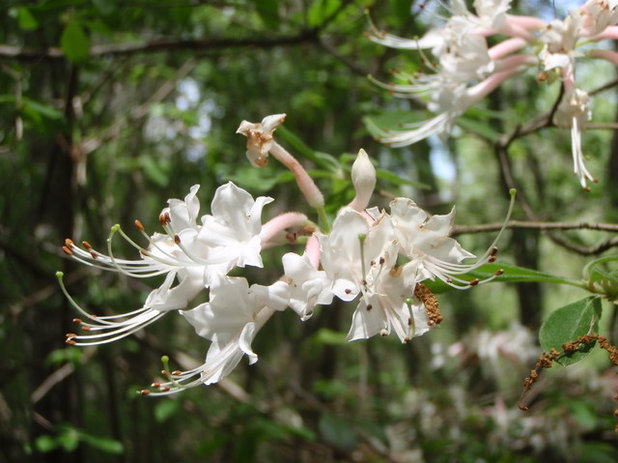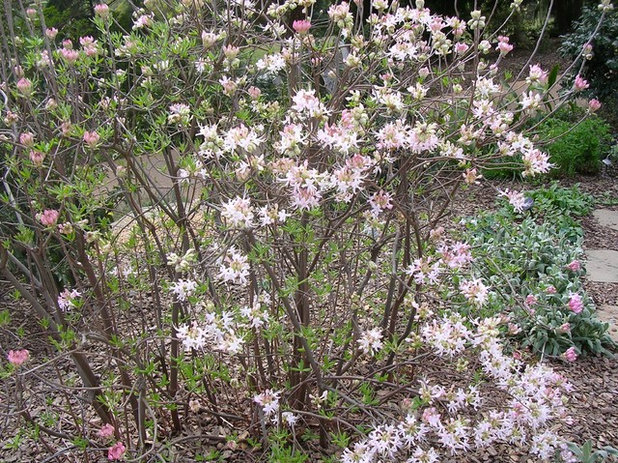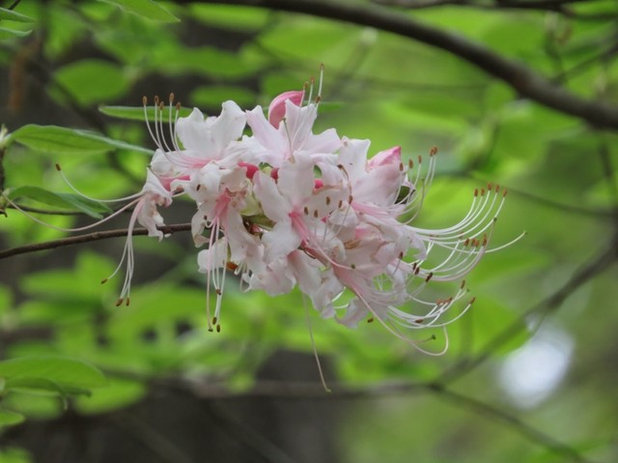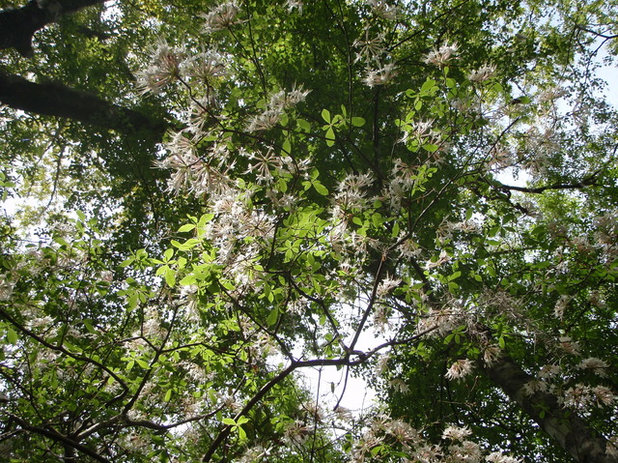The Southern garden wouldn’t be complete without azaleas. Every spring they make a big statement in every color you can imagine. The Piedmont azalea (
Rhododendron canescens) is a native woodland shrub with a pale pink color that will offset the punchy tapestry of bright red and orange azaleas. Plant it now and keep the soil moist to ensure an amazing spring display of flowers.
 Botanical name: Rhododendron canescensCommon names:
Botanical name: Rhododendron canescensCommon names: Mountain azalea, Piedmont azalea, wild azalea, southern pinxterbloom
Origin: Native to the southeastern U.S.
Where it will grow: Hardy to -10 degrees Fahrenheit (USDA zones 6 to 9; find your zone)
Water requirement: Medium to high
Light requirement: Partial shade
Soil requirement: Prefers acidic, moist soil with organic matter
Mature size: Up to 8 feet tall and 6 feet wide
Benefits and tolerances: Tolerates wet soil and attracts pollinators
Seasonal interest: Delicate, fragrant flowers in spring
When to plant: Fall
Caution: Although hummingbirds feed on azalea nectar without a problem, the plant is toxic to humans and pets if ingested.
Photo by John S. Quarterman
 Distinguishing traits.
Distinguishing traits. Similar to others in the
Rhododendron genus, Piedmont azalea tends to have long, slender branches. Its flower structure is unique, because of the long stamens that extend far beyond the reach of the petals. Blossoms in a range of white and pale pink to bright pink cover this shrub March through May.
 How to use it.
How to use it. Plant this shrub in light shade and give it plenty of room to colonize. Use it as a naturalized massing plant under pines or mixed with other ericaceous plants. Pair Piedmont azalea with coniferous evergreens that can act as a green backdrop to the pretty pink spring flowers, or train it into a specimen shrub near your patio or entryway.
Photo by Duane Burdick

Piedmont azalea is valuable to bumblebees and other pollinators. Hummingbirds are attracted to azaleas because of the long trumpet-shaped base of the flower. To act as a food source for hummingbirds, the bloom time must match the time of hummingbirds’ migration in the Southeast. The ruby-throated hummingbird has been documented on its spring migration heading north during March and April. (Check out the map here.) Depending on your location, the start of blooming time will vary.
Photo by John S. Quarterman
 Planting notes.
Planting notes. Plant Piedmont azalea in autumn, when temperatures are cooler. If possible, select a plant at the nursery that is covered in developing flower buds. Take care to
keep the soil moist after transplanting to ensure that the buds fully form. If your plant lacks a big flower display in spring, it’s because it dried out during its autumn flower bud production.
Piedmont azalea will readily hybridize with other rhododendrons. If you plan to grow it to collect seed for propagation, select a site away from neighboring rhododendrons to maintain genetic quality.
Photo by Kid Cowboy

The Collins Group/JDP Design
Give water directly to the roots and avoid irrigating with overhead sprinklers or watering from above with your garden hose. Piedmont azalea can be susceptible to some diseases if the leaves and twigs are often soggy. Another way to encourage airflow around the plant is to lightly prune the branches to open up the form. Pruning is best done in summer after the plant has bloomed and before it begins setting its flower buds.

The Collins Group/JDP Design
Similar species and cultivars:- Rhododendron canescens ‘Camilla’s Blush’; has rich pink blooms
- Rhododendron periclymenoides, pinxterbloom azalea; also a native U.S. species and cold hardy to zone 4
- Rhododendron viscosum, swamp azalea; also a native South U.S. species that likes wet soil; has white flowers
More: What to do in your garden this month





